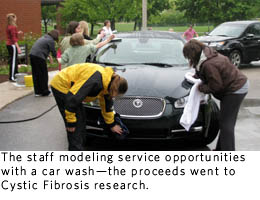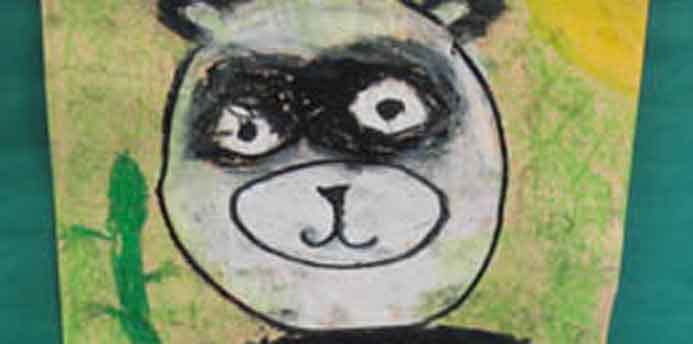Everett Elementary School students don’t just learn about math, science and language, they use what they’ve learned to make the world a better place.
After studying bears in the classroom, Everett kindergarteners took their learning one step further by painting the bears in art class, but it didn’t stop there. Each painting was copied onto cards and sold in bundles to parents. The children then took the proceeds and built bears at Build a Bear Workshop. The stuffed animals will be given to patients in Children’s Memorial Hospital Oncology Unit.
This is one example of the difference this Lake Forest school is making within the community. Two years ago, an Everett School staff survey indicated a need for service learning. Now, 100% of the roughly 350 kindergarten through 4th grade students are involved in at least one service project a year.
 The Service Learning Program integrates service into academics. For example, 4th grade classes complete required research goals by investigating causes in the area. Once they have picked a worthy cause, each student writes a persuasive essay and reads it to classmates. Then they vote on which project they wish to sponsor as a class.
The Service Learning Program integrates service into academics. For example, 4th grade classes complete required research goals by investigating causes in the area. Once they have picked a worthy cause, each student writes a persuasive essay and reads it to classmates. Then they vote on which project they wish to sponsor as a class.
While the final product is rewarding to all involved, the teaching process is most important. The program stresses the importance of learning through service. It involves developing a plan through discussion, brainstorming, research, planning, implementation, monitoring, analyzing, reflection, communication and celebration.
Embedding developmental steps within academics prepares Everett students to make rational, real-world decisions in the future. Dr. Ingrid Wiemer, principal of Everett Elementary, believes this unique learning process cultivates moral character as it allows students “to enhance empathy, foster an awareness of the power we all have to affect change, and help students look outside of their own wants and needs.”
The most integral step of the program is reflection by the students on their accomplishments. They feel empowered because their contribution has added value to a worthy project. As a result, Dr. Wiemer has seen a decrease in disciplinary referrals and a strong sense of classroom community. Students can more easily empathize with one another when a problem arises through their experiences of positively collaborating together.
Parents contribute by making a conscience effort to integrate service learning into family life, whether it’s though their church, neighborhood or family lifestyle. This collaboration helps students evolve into leaders as they work on solutions to the problems around them.
Lead photo: Example of “Bear” notecards, created and sold by Kindergarten students so they could go to Build-A-Bear and make bears for patients at Children’s Memorial Hospital. Students wrote personal notes and put them inside the bear boxes. They painted the pictures as part of their research on different types of bears.

